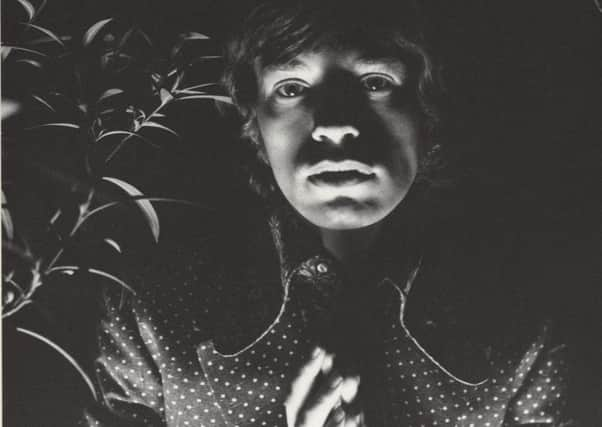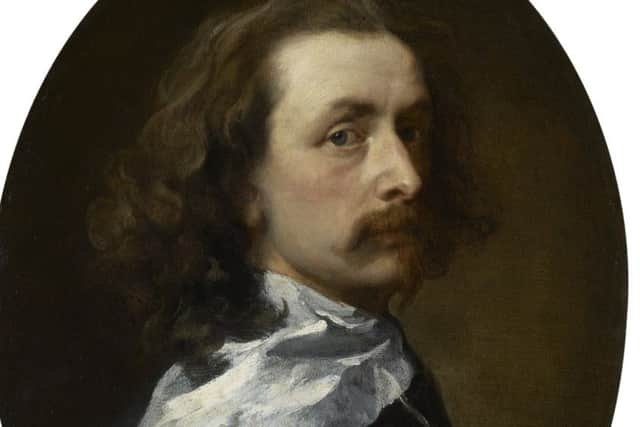Art review: Looking Good: The Male Gaze from Van Dyck to Lucian Freud at the Scottish National Portrait Gallery


Looking Good: The Male Gaze from Van Dyck to Lucian Freud Scottish National Portrait Gallery ****
The fashion for male grooming in the last couple of decades, the rage in designer barber shops, masculine moisturisers and beard balm, might seem to suggest that men’s interest in their appearance is a new phenomenon. It isn’t, of course. Consider Mods and Teddy Boys. Or, look back further, and consider the evidence offered by the history of art.
Advertisement
Hide AdAdvertisement
Hide AdWhile conventional notions of beauty in Western art tend to be focused on the female, it wasn’t always thus. The ancient Greeks idealised the male body, something which is recalled in Renaissance works such as Michelangelo’s David. But, for the last 500 years, portraits of men have focused on their status rather than their looks.


That makes this exhibition feel both fresh and refreshing. Drawn from four centuries of male portraiture, from Van Dyck to David Beckham, this is a history of sartorial dressers, of spivs and peacocks and poseurs. Whatever these men are famous for, whether as courtiers or artists, rock stars or sportsmen, the thing they have in common is how much they care about how they look.
The show is built around Van Dyck’s self-portrait, bought by the National Portrait Gallery in London for £10 million in 2014 after a major public appeal (though, strangely, it doesn’t appear until three-quarters of the way through). Now on a nationwide tour, the portrait will be grouped with fresh works in every venue, here with a selection of 28 pictures from the collections of National Galleries of Scotland and the NPG.
The Van Dyck was painted in 1640, when the artist was principal painter to the court of Charles I, a place where appearances mattered and ostentation was a political bargaining chip. He portrays himself as a gentleman, stylishly dressed in a slashed black silk doublet and linen collar, his long curly hair tossed back artfully. The painting is framed in an elaborate gilt frame which he may have commissioned.
For all that, he is drawing our eye to his face, which looks out directly at the audience, leap-frogging over the centuries. He is serious, quizzical, a man with much more on his mind than simply how well he’s doing. And he is looking at us every bit as much as we are looking at him.


The other Van Dyck work here is a portrait of Lord George Stuart, a key supporter of Charles, who had high hopes within the regime until he was killed at the Battle of Edgehill in 1642. Grand in scale and ambition, it styles Lord George as a romantic shepherd in an arcadian landscape (albeit a very finely dressed shepherd with bows on his boots). It’s aristocratic make-believe, dressing up and power play all at the same time.
James Hamilton, Charles’ chief adviser in Scotland, by Daniel Mytens, hangs nearby. He’s dressed in the latest fashion, a grey costume shot through with (expensive) silver thread which catches the light, with a classical pillar next to him to add gravitas. If you had wealth and power in Charles’ court, you flaunted it, and a portrait was a good way to do so.
Advertisement
Hide AdAdvertisement
Hide AdThe self portrait by Sir Nathaniel Bacon from the early 17th century is a different proposition. This aristocrat, who was clearly a very talented amateur painter, works on a more intimate scale, showing us his restrained but costly satin doublet with gold braiding, his immaculate horizontal moustache and pointed beard. He makes an interesting companion to 1960s fashion designer Bill Gibb, portrayed as a 16th-century knight in the costume of the time he loved and was inspired by.
In a group of historical portraits which focus on style, one can observe how fashions come and go (sometimes dictated by the detailed manuals which appeared on the subject). Beards and moustaches went out, came back in. Hair was long (or wigged), or short, or romantically tousled.
Clothing had a language: black spoke of both style and gravitas, it was sober, but expensive too, because of the dyeing process required, and so spoke of assured wealth. How a man chose to be depicted spoke volumes: architect Sir William Bruce, pen in hand, wearing his “banyan” (a kind of Indian-style housecoat) was letting his audience know that he was not just a mere draughtsman but a gentleman of intellect and leisure.
The self-portraits by artists are some of the most interesting works here. Lucien Freud once said that “all my work is autobiographical”, but the self-portrait shown here is actually very modest, almost more about the paint itself than the subject. Sir Joshua Reynolds, by contrast, even as a young man, paints a self-portrait which shows him self-consciously to be an Artist: brush and palette in hand, shading his eyes dramatically, he fixes his gaze as much on his imagined audience as on the mirror he was using to paint.
The most recent works in the show asks questions about how we define masculinity. Cecil Beaton described Mick Jagger as having a “voguish glam-rock androgyny shot through with powerful echoes of the past”. Dancer Michael Clark lounges, angel-faced, in his ripped jeans. Robert Mapplethorpe, who did so much to examine the notion of male beauty, combines a tough, tattoed physique with fine features in his portrait of rockabilly musician “Smutty” Smith. Grayson Perry wears a dress.
Jonathan Owen’s marble bust is a kind of deconstruction of a portrait. With the head reduced to a series of bars, we can no longer make out this man’s face (though there are traces of bushy eyebrows and a handlebar moustache), so we start to read his uniform instead, its medals and epaulettes key signifiers of male power.
A shirtless Linford Christie looks like a piece of Greek statuary. David Eustace’s photograph of John Byrne shows the subject at his most sartorial. David Beckham and Tinie Tempah have built brands around their looks. Gerard Butler, by Sarah Dunn, is described as having an image which is “super-masculine”. Interestingly, this is one of the only works in the show by a female artist.
Advertisement
Hide AdAdvertisement
Hide AdWhat we’re seeing in this exhibition is a very “male gaze”. There is a sense of agency in the way these men are painted or photographed, as though we are seeing them not only through the eyes of artist, but through their own eyes: we are seeing them as they see themselves. This is a marked contrast to many historical portraits of women. In that way, too, this show is instructive in what it shows us about the images which have come down to us from the past.
Until 1 October